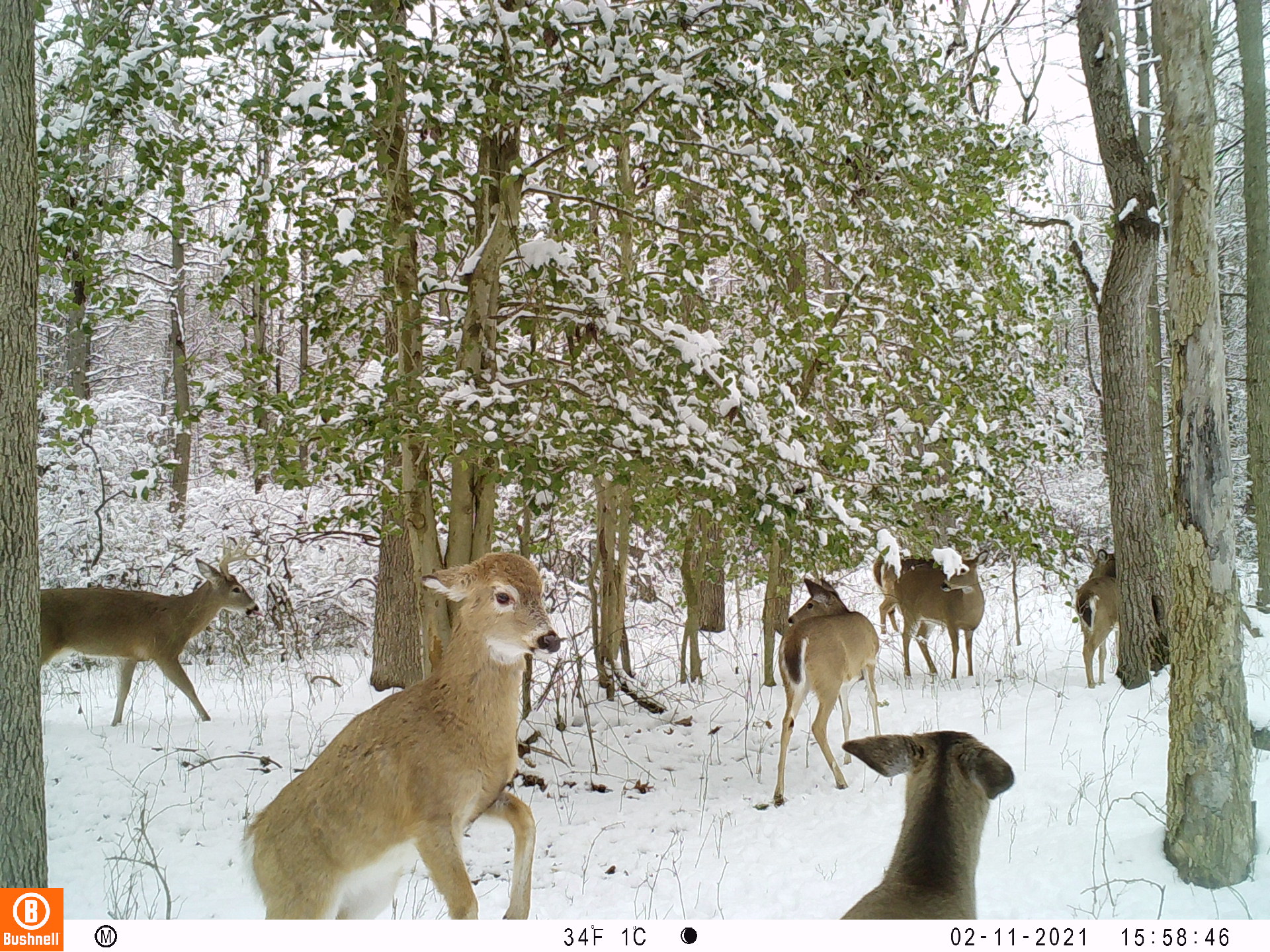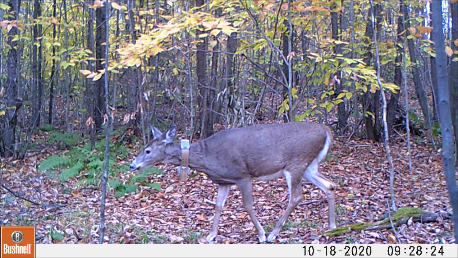We all know the adage – A picture is worth a thousand words.
Do you know what it’s not worth? A deer population estimate. Not even a thousand photos from a camera can tell you how many deer there are.
Trail cameras appear to be ubiquitous today. Everybody seems to have one. Duane and I are certainly part of that crowd. It’s fun to set them up and see what’s out there when we are not [Unless you’re Duane and the camera just tells you when you SHOULD have been at your deer stand]. We’ve used photos captured on our trail cams many times on the blog. In fact, those photos have inspired many posts.

Some people are very invested in the use of trail cameras running multiple cameras throughout the year. A friend of the Deer Forest Study and the blog shares photos and videos of our collared deer on a regular basis from the cameras he keeps in our study area.
Scrapes and collars aside, I have heard more times than I can count that “the deer population is down where I hunt; my trail camera shows that.” Actually, it doesn’t. Because unless you are running a survey and calculating estimates, merely seeing less (or more) deer on your trail cam says nothing about the population.
If you Google “using trail cameras for population estimates,” you get 36 million results in 0.46 seconds. Trail cameras CAN be used to estimate deer populations. One of the first evaluations of their use for population estimates occurred over 2 decades ago. Since then, many more studies have been published about the pitfalls, assumptions, and best practices of using this technique of population estimation with entire courses dedicated to camera trapping study design, data management, and analysis.
You can even find instructions online on how to set up your own camera survey to estimate deer populations. Texas A&M Natural Resources Institute, Mississippi State University Extension, and Perdue University Forestry & Natural Resources all have instruction guides.
MSU DeerLab breaks it down nicely. First, you’re going to need more than one camera. Recommended camera density is 1 camera/100 acres. Next you are going to need a map of the area. Divide the area of interest into 100-acre blocks then place one camera in each block. Be sure to set the camera on a 10-minute delay and face them north or south. Camera stations need to be baited as well. Run the survey for 10-14 days.
Collect the data from the cameras. Grab a datasheet and a pencil or get to a computer to analyze them. Math is involved. Suffice it to say it’s not just a straight count of the deer in the photos.
After investing all this time, energy, and money, you will get an ESTIMATE of the deer population.
What’s my point? Enjoy those trail cameras and have fun looking at all the pictures. But don’t put much stock in what you think it’s telling you about the deer population.
-Jeannine Fleegle
Wildlife Biologist
PGC Deer and Elk Section
